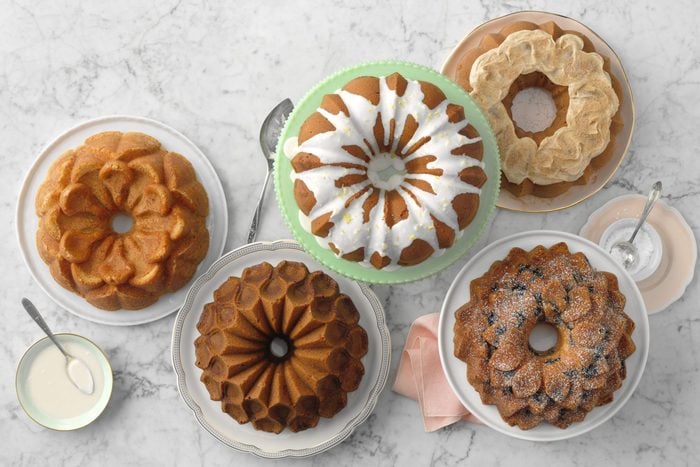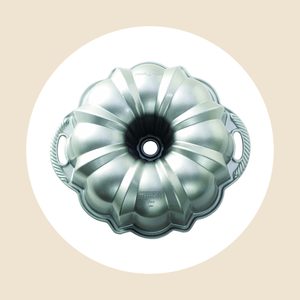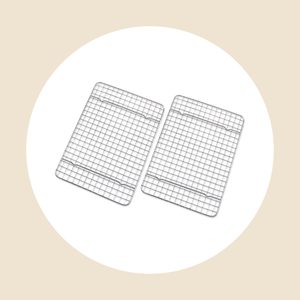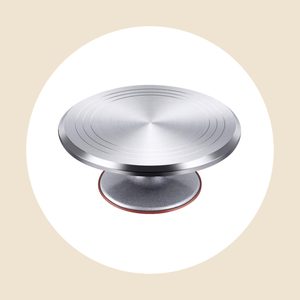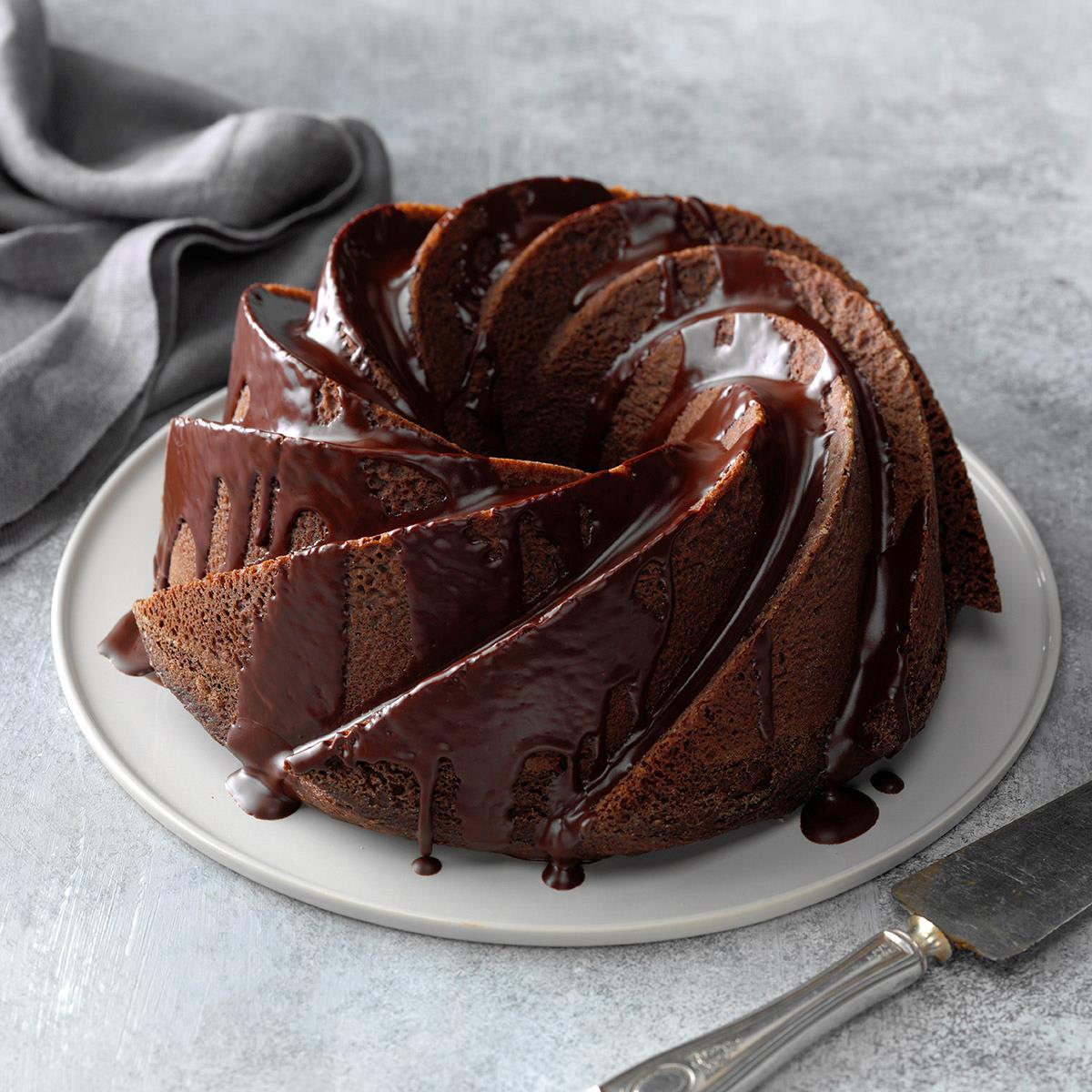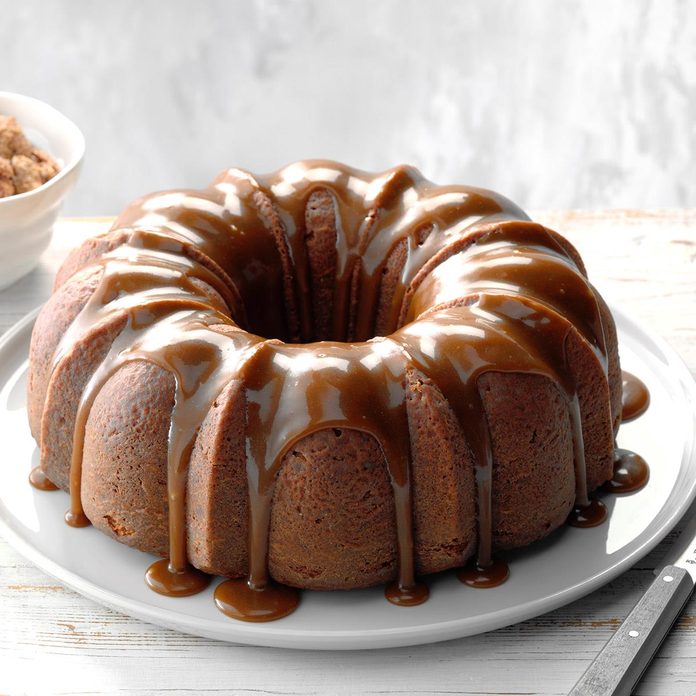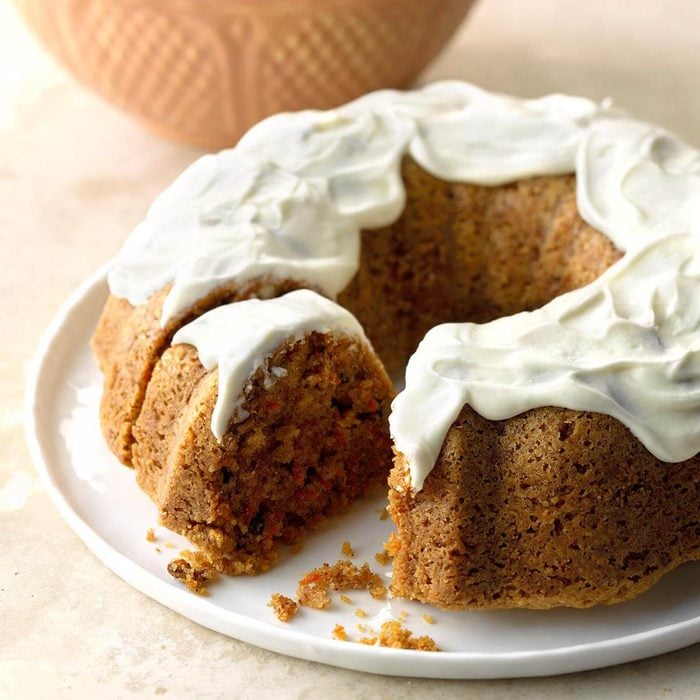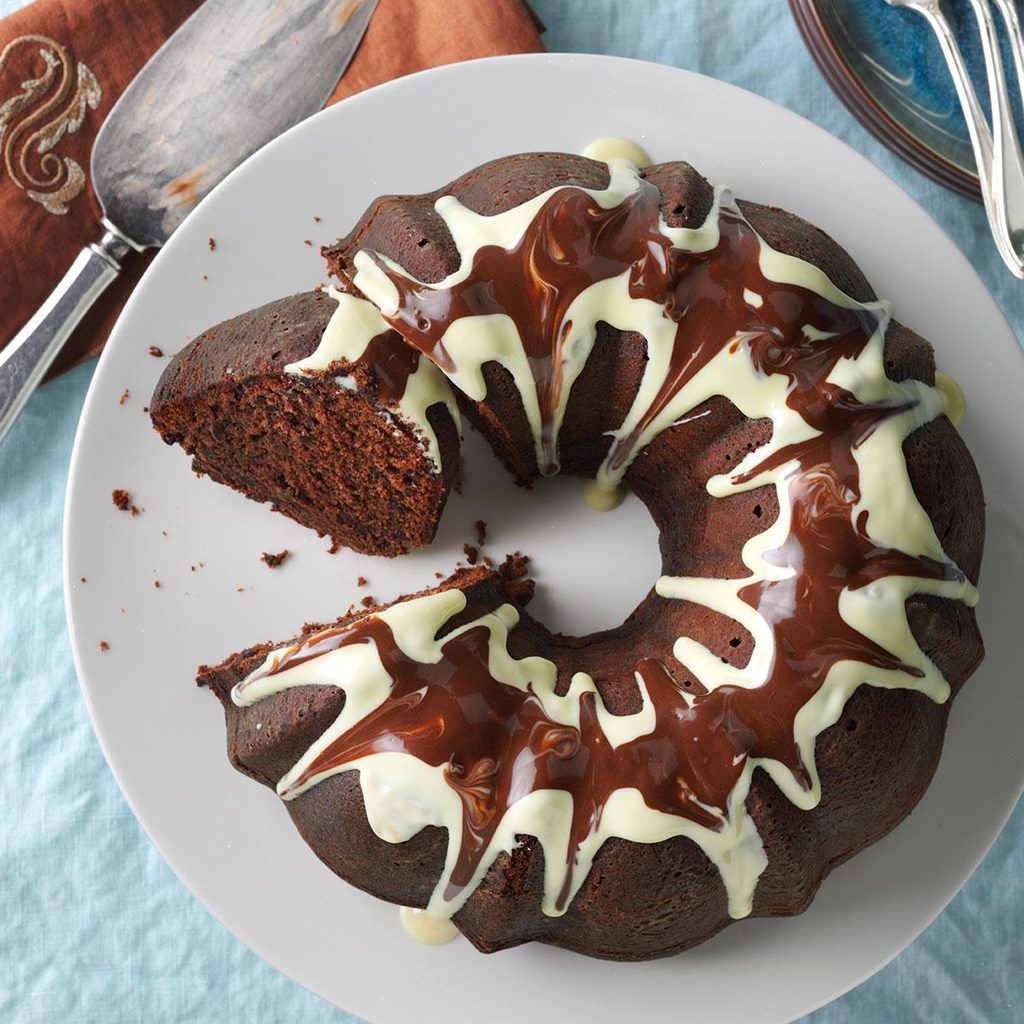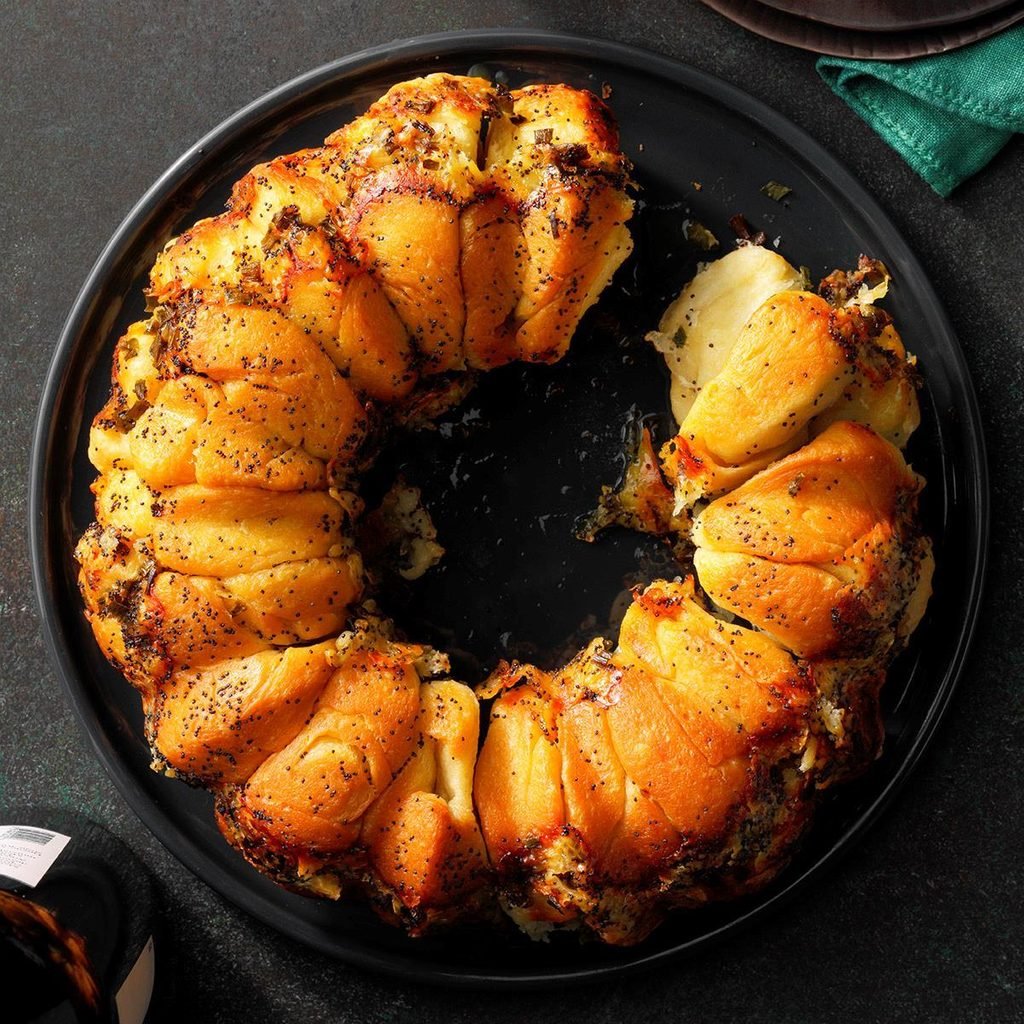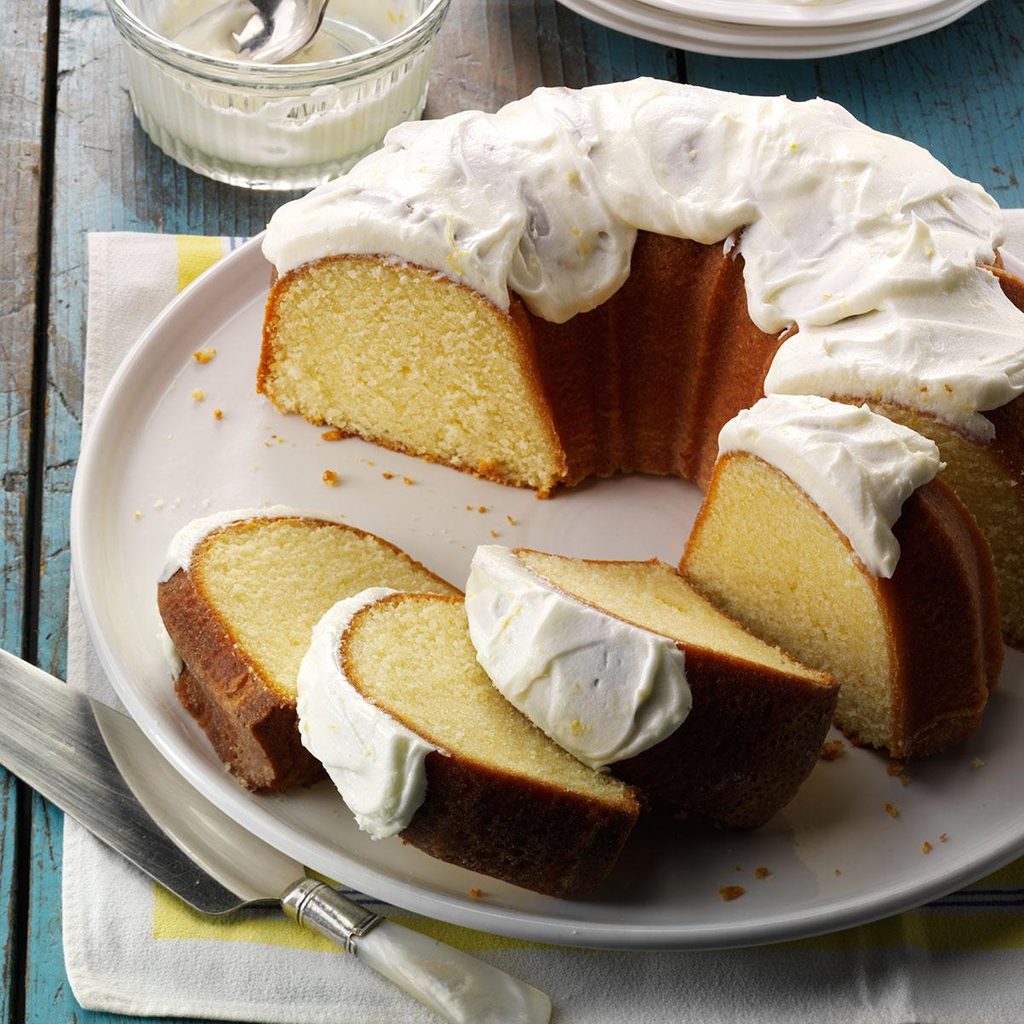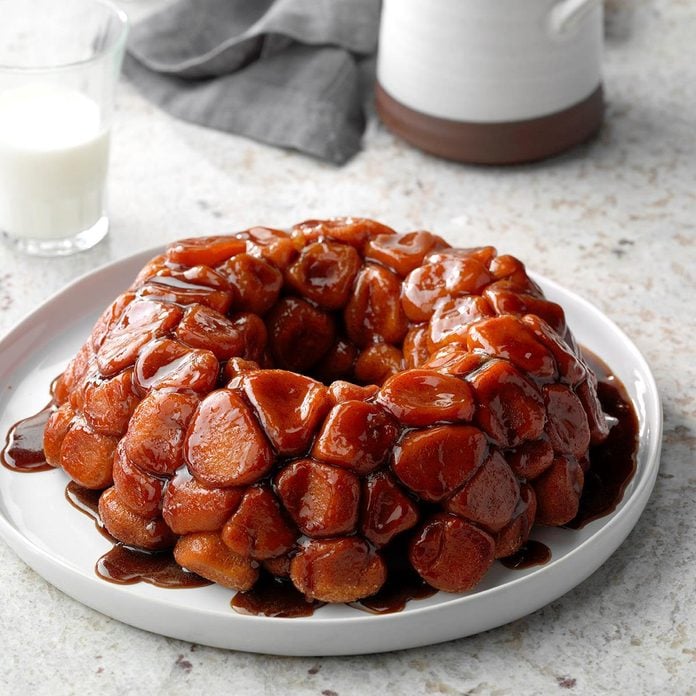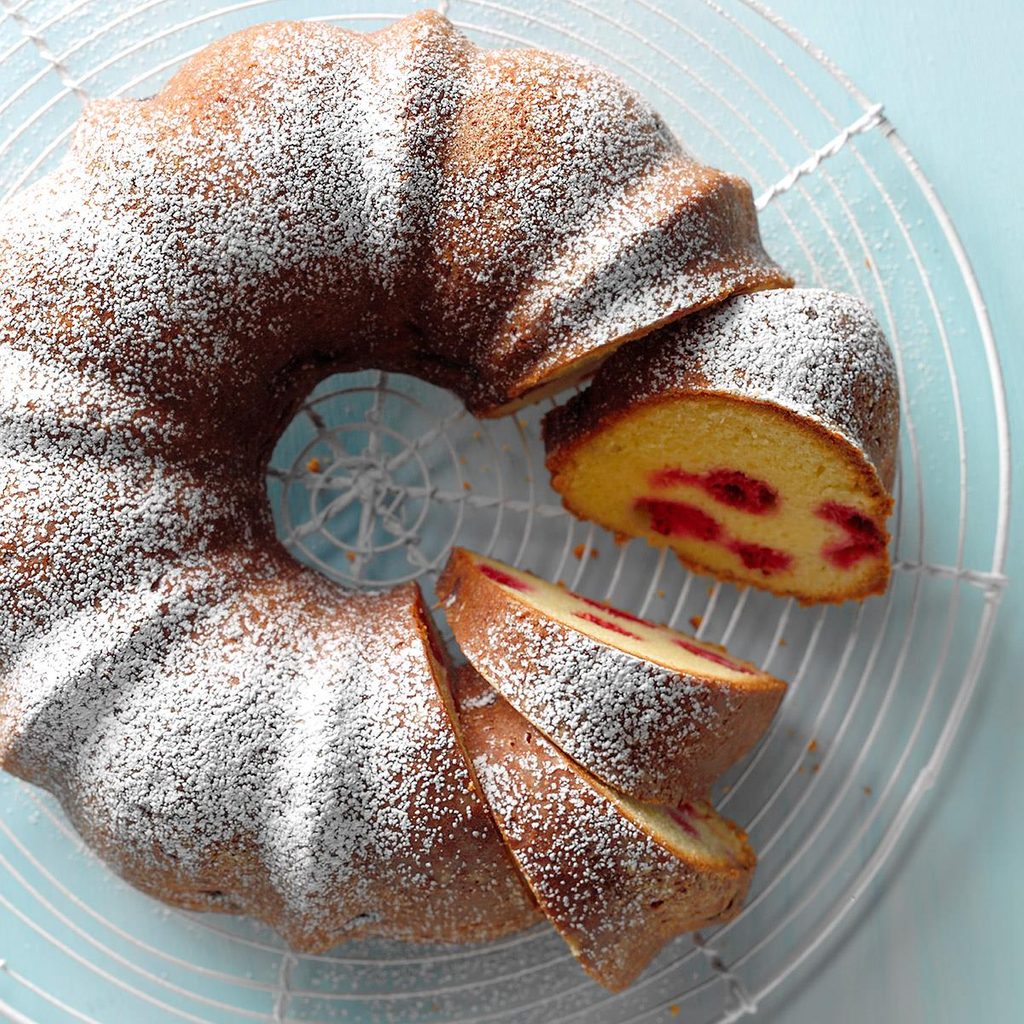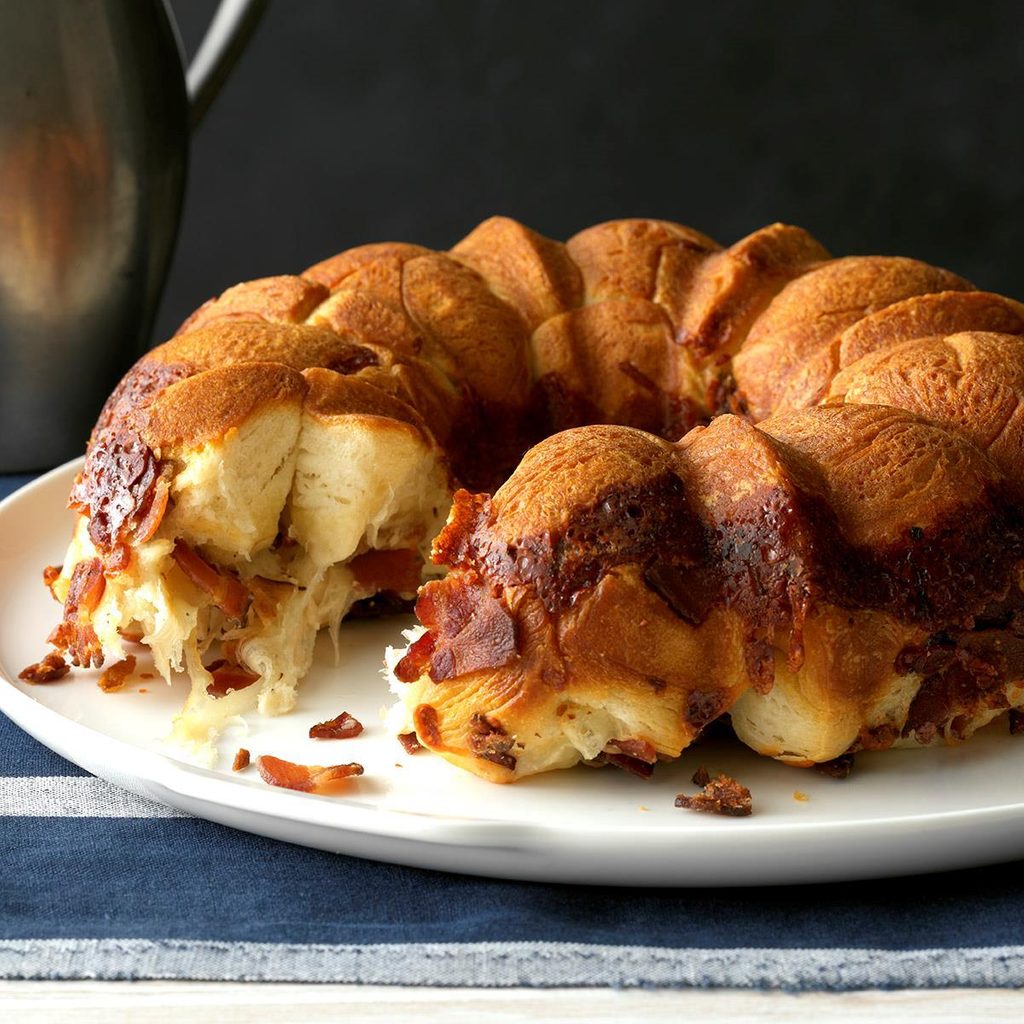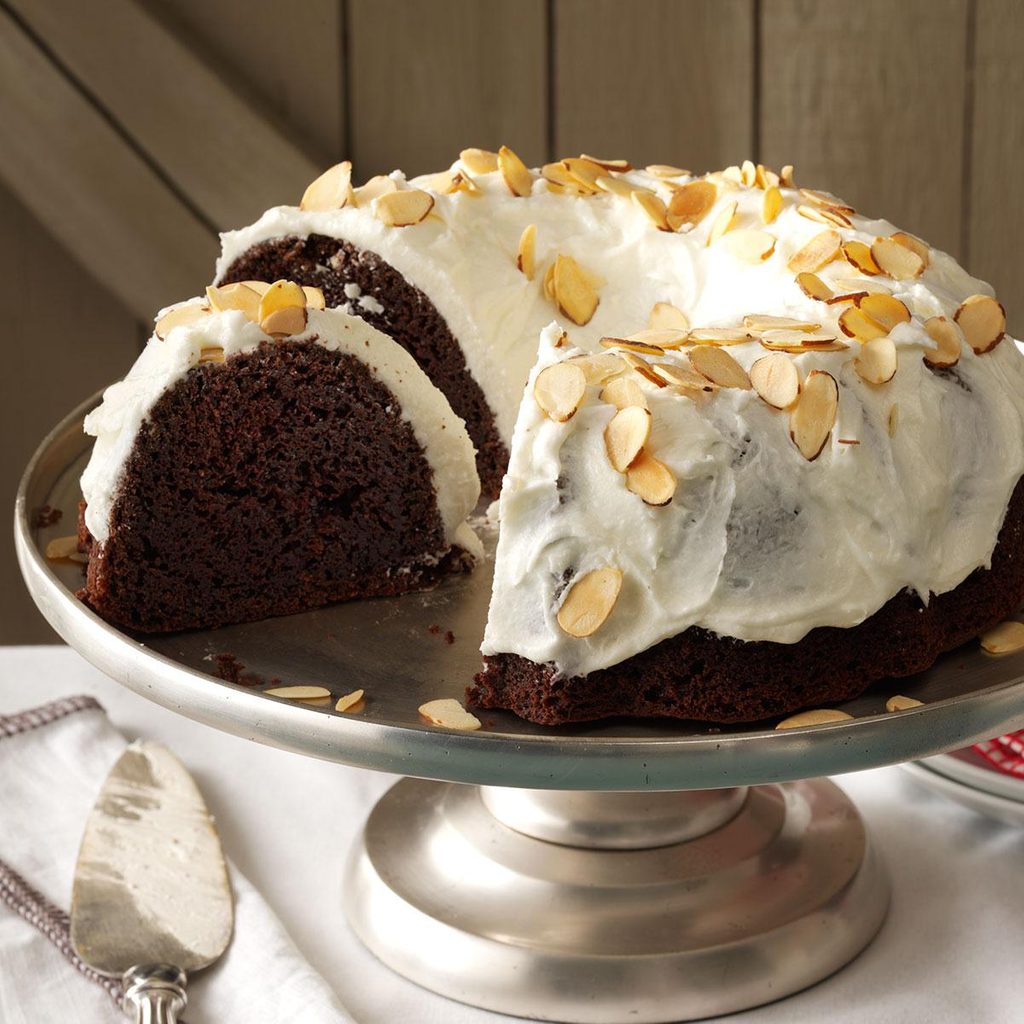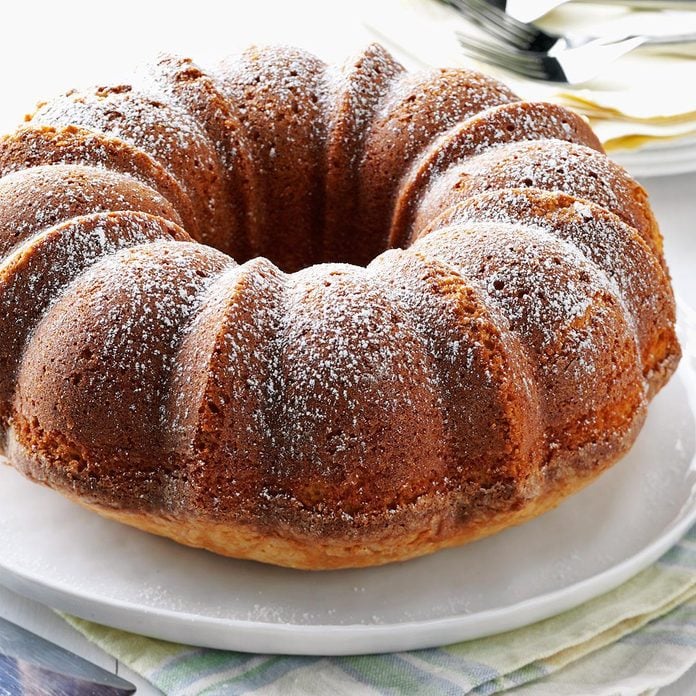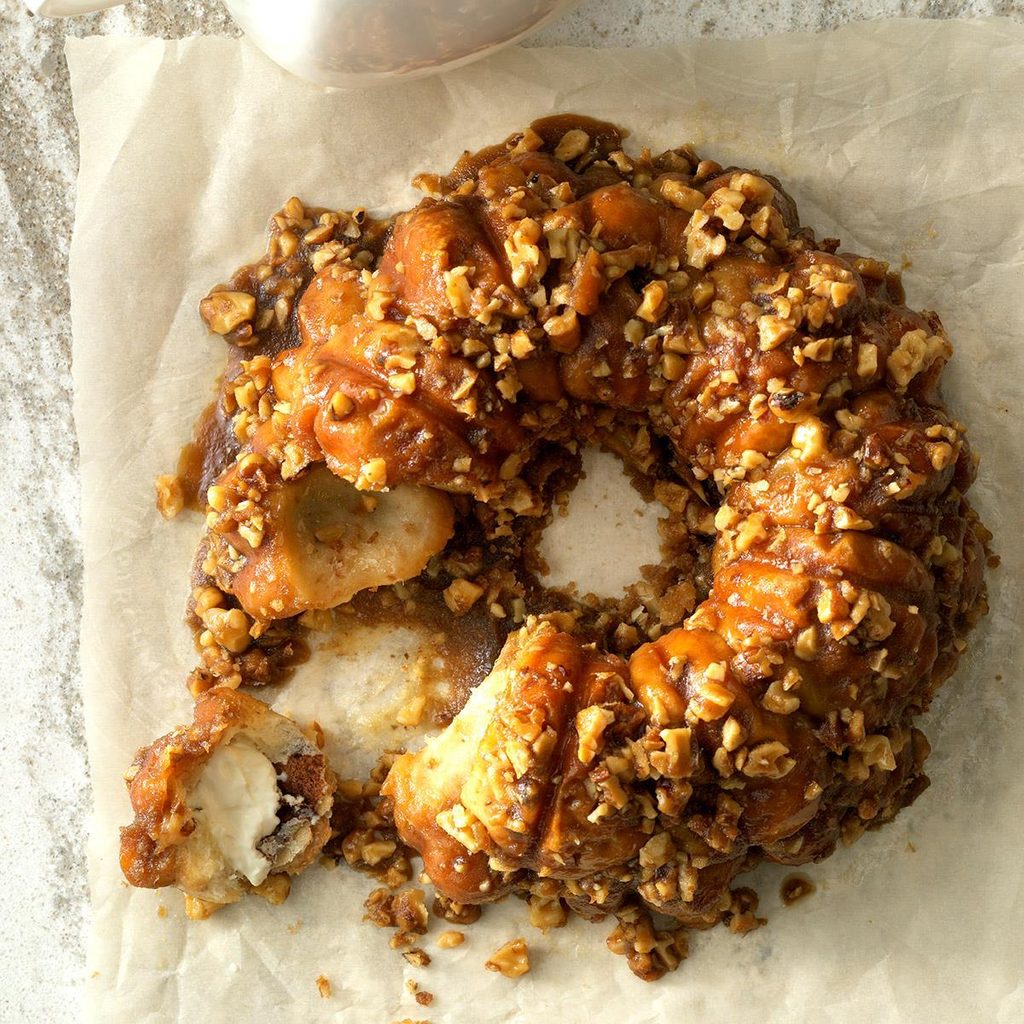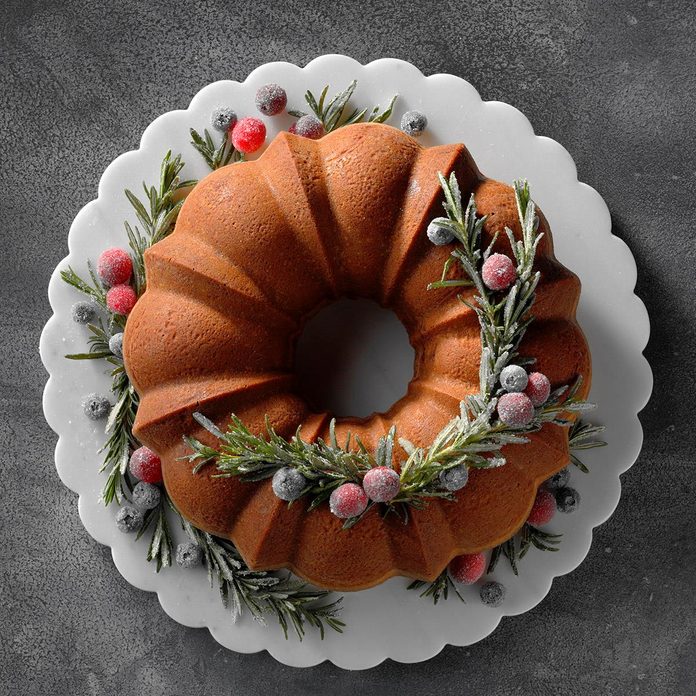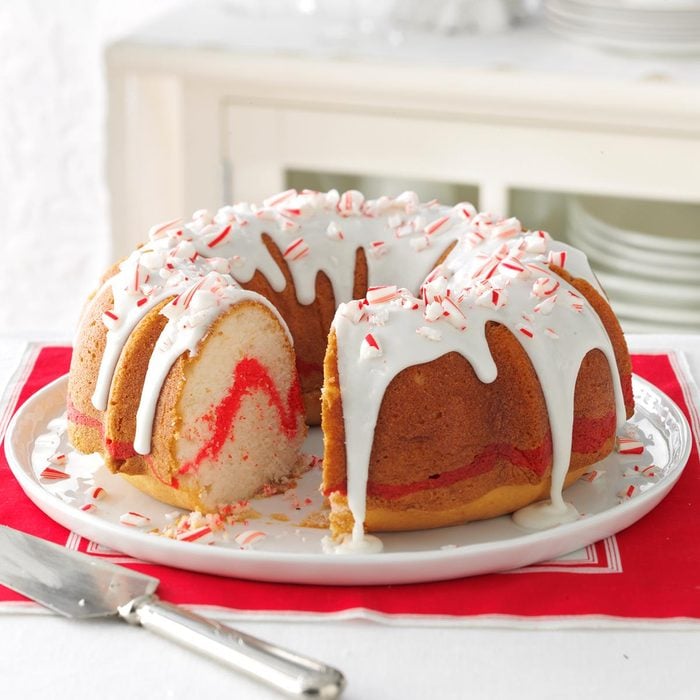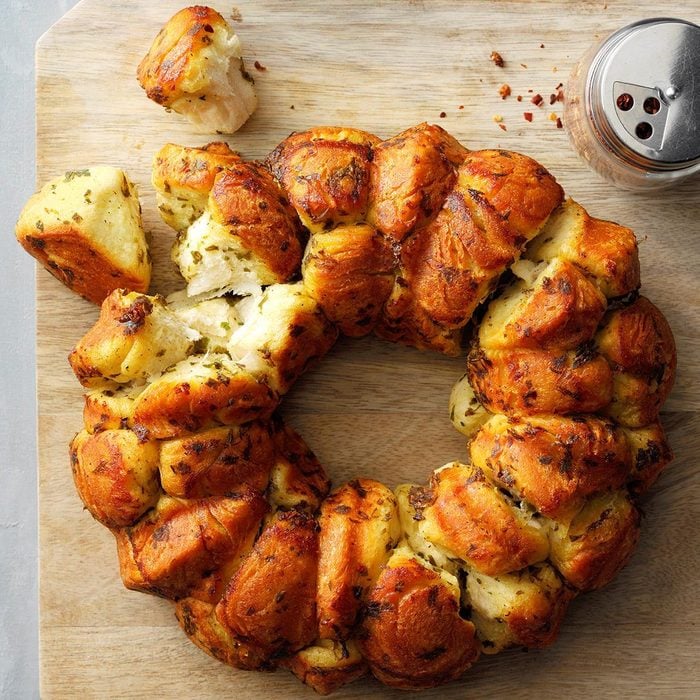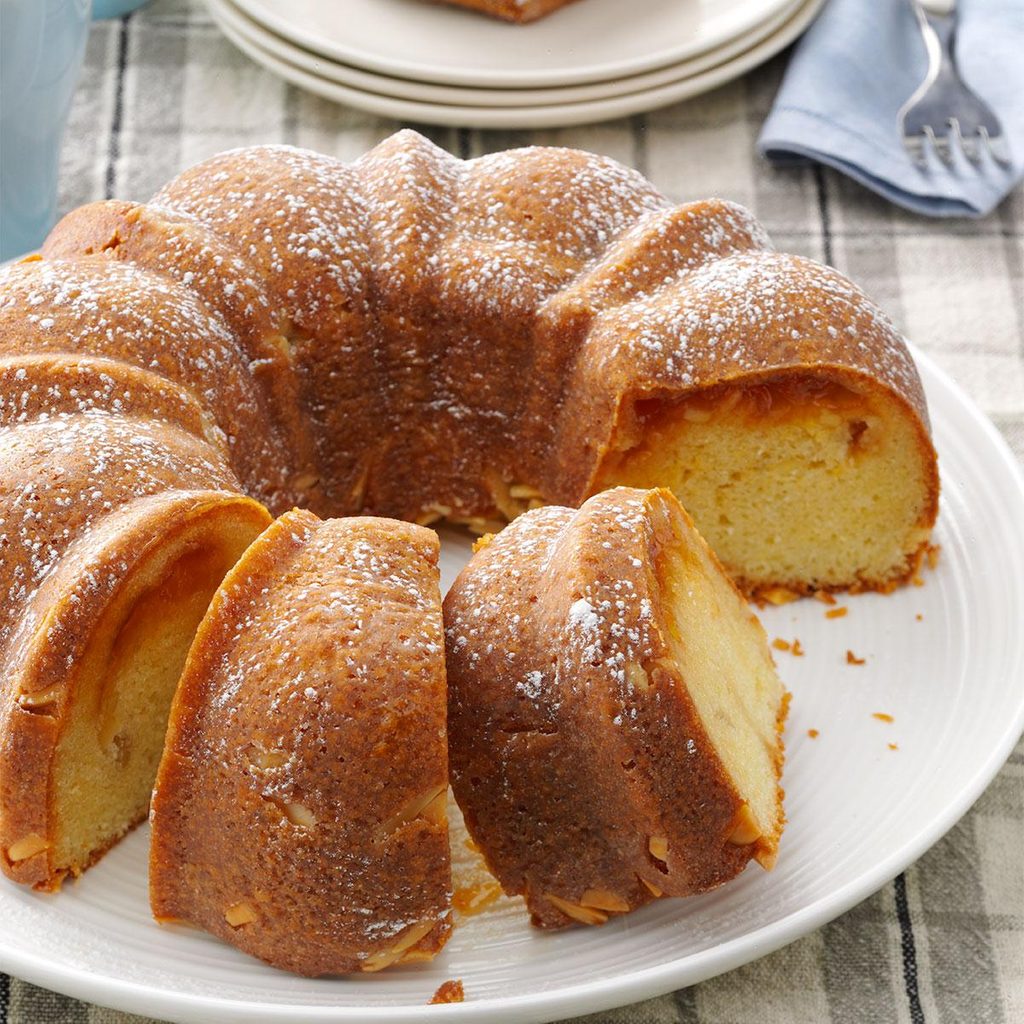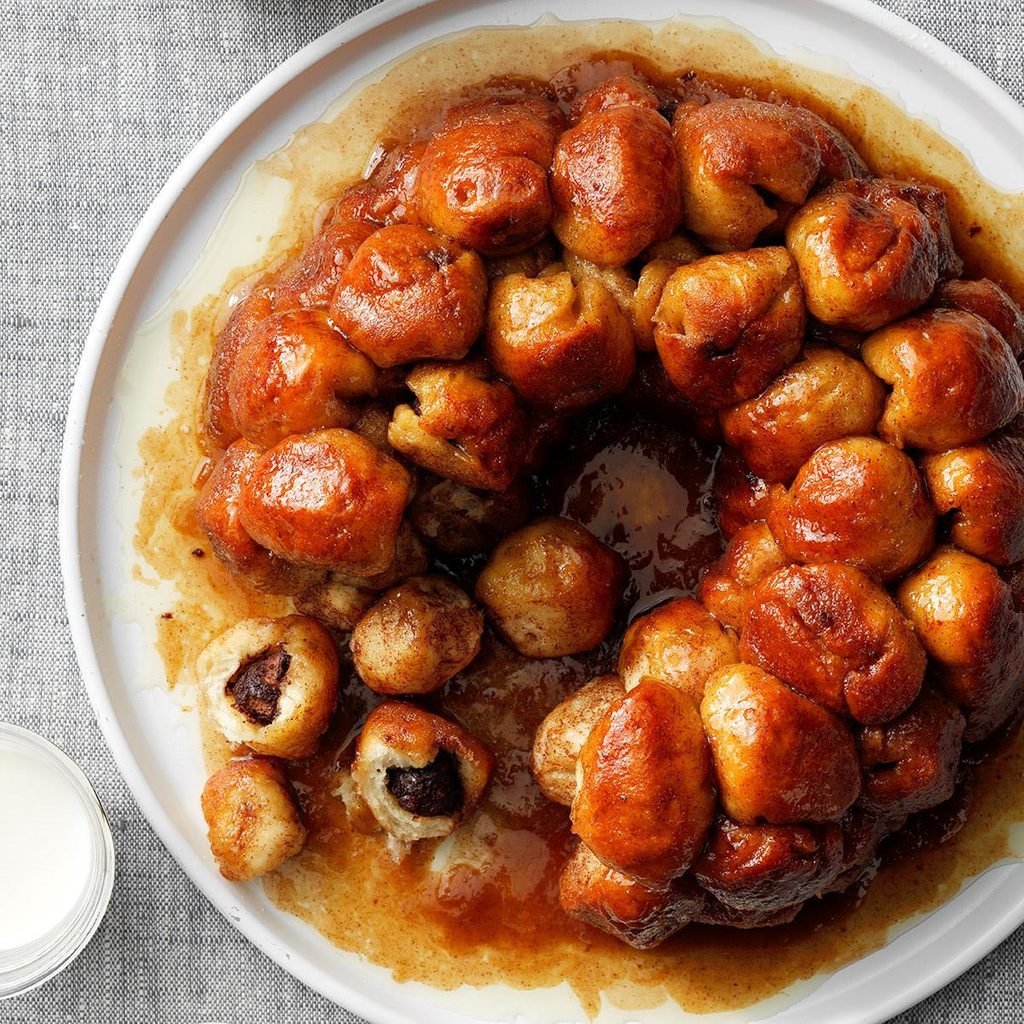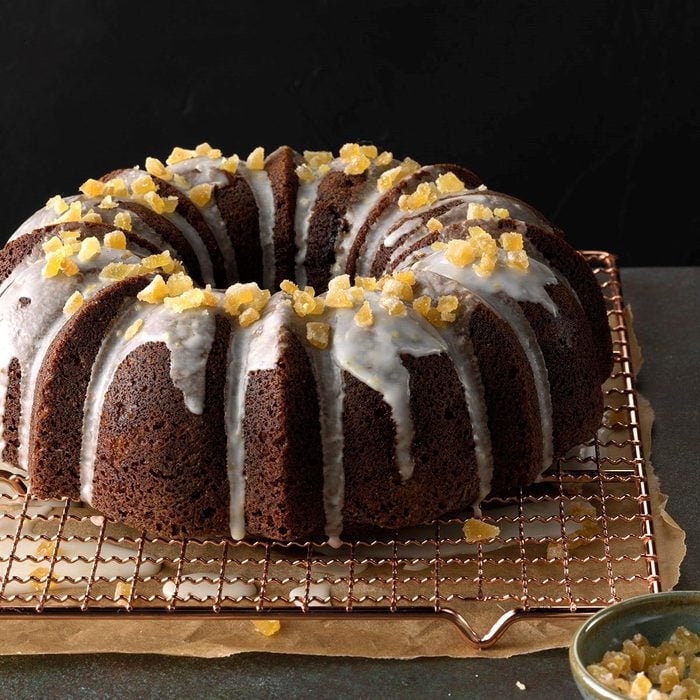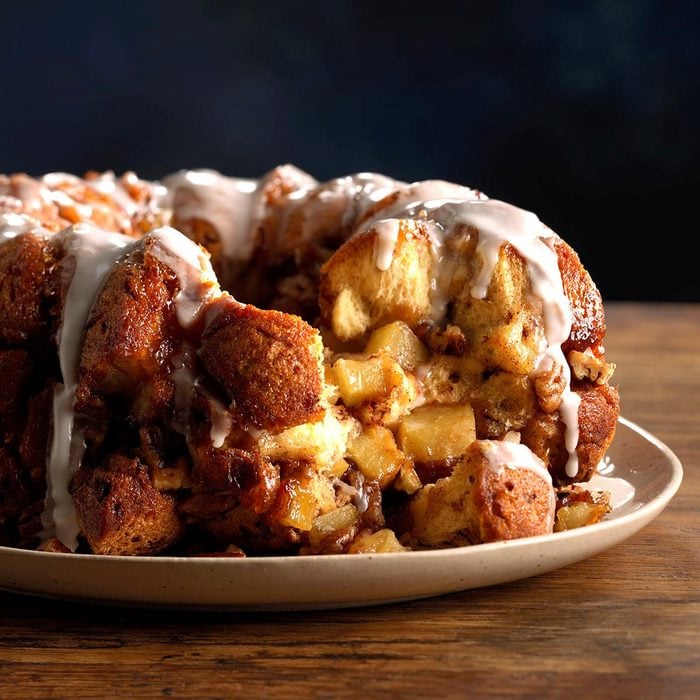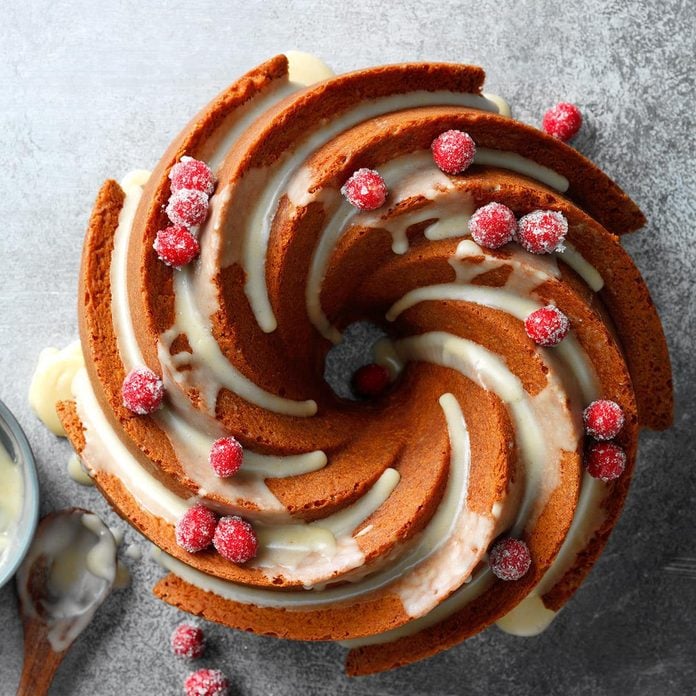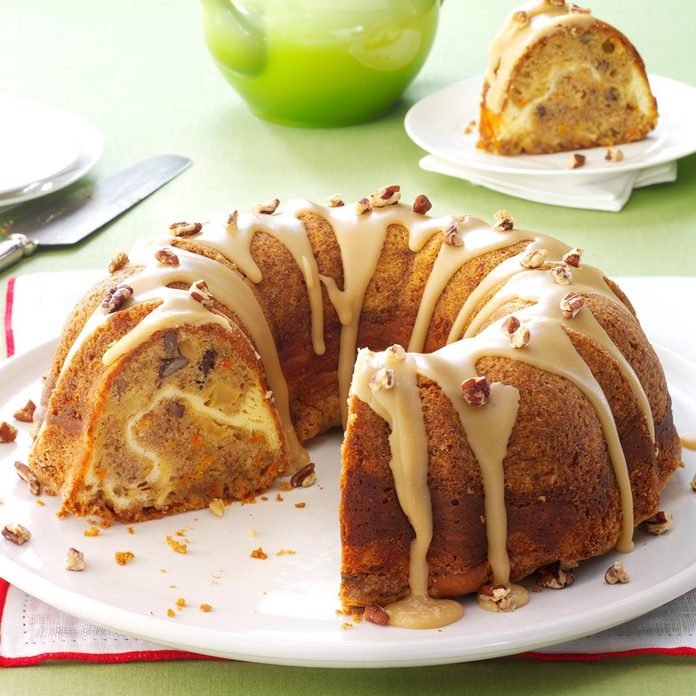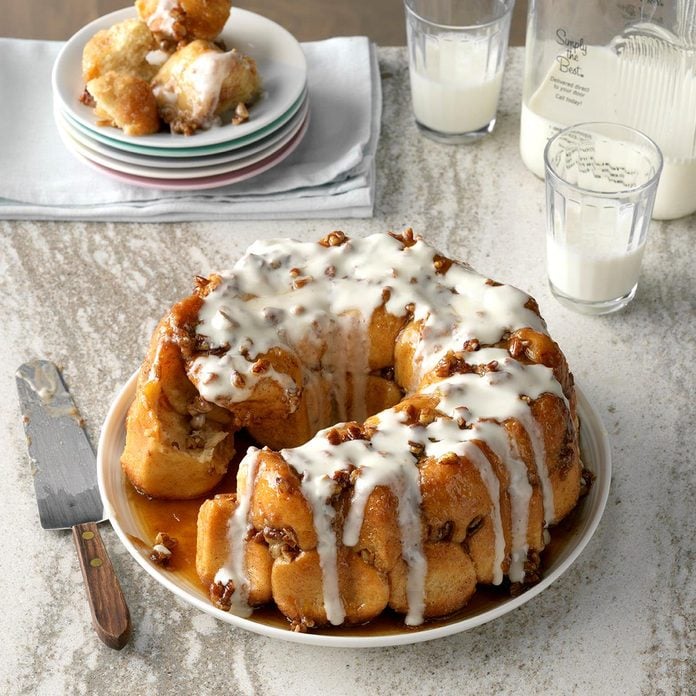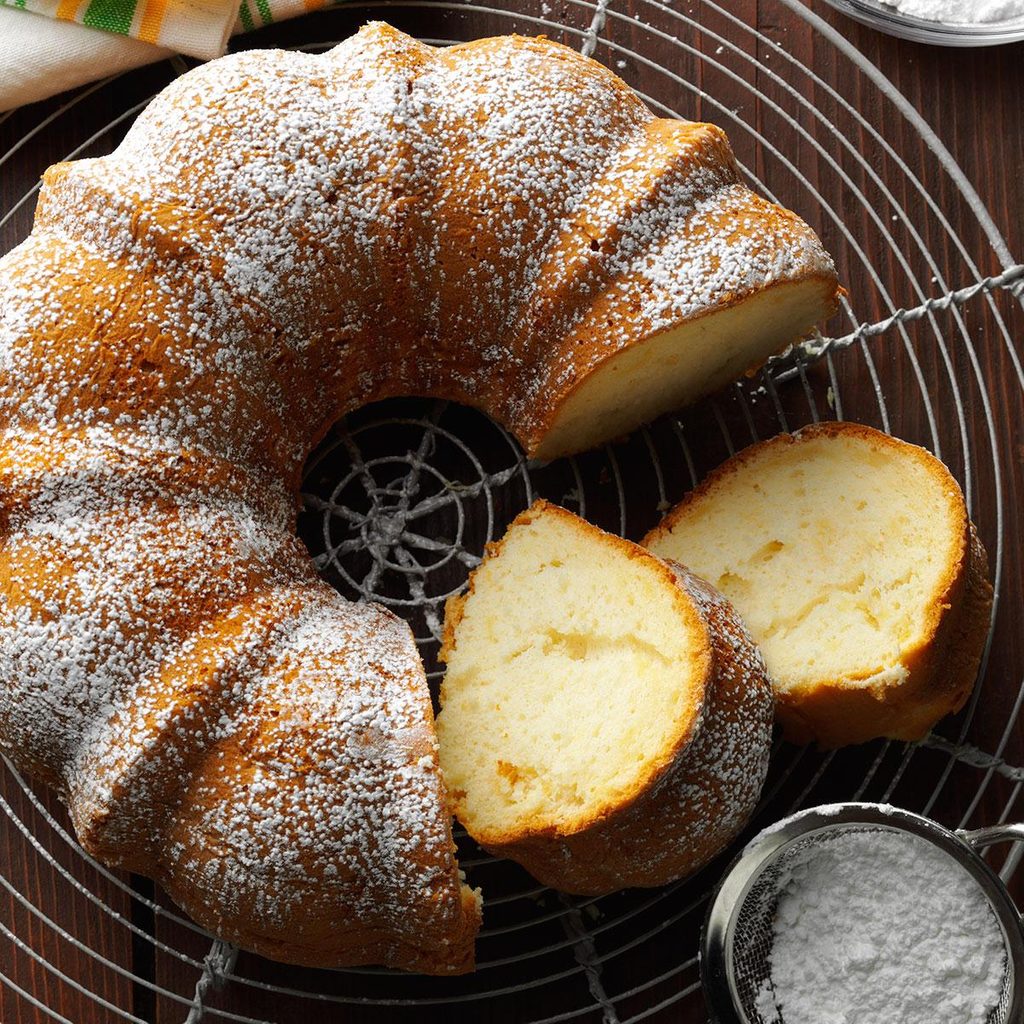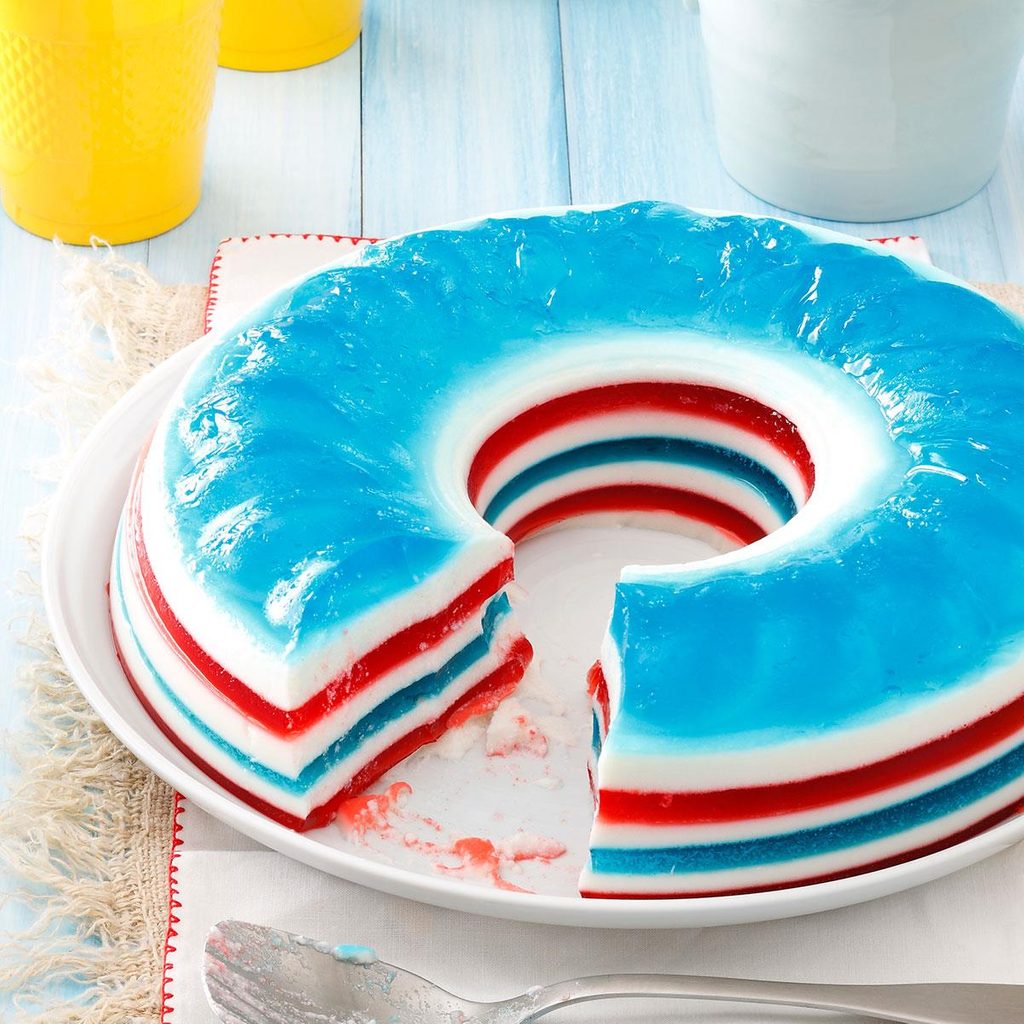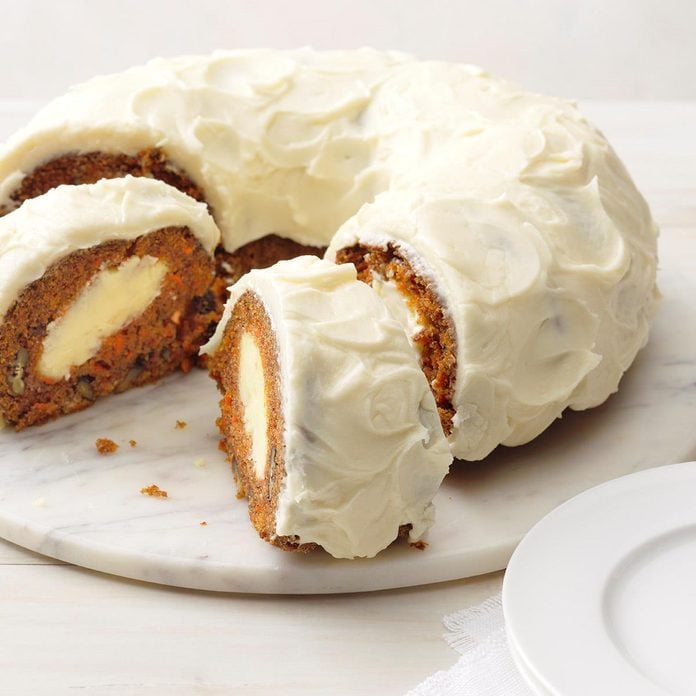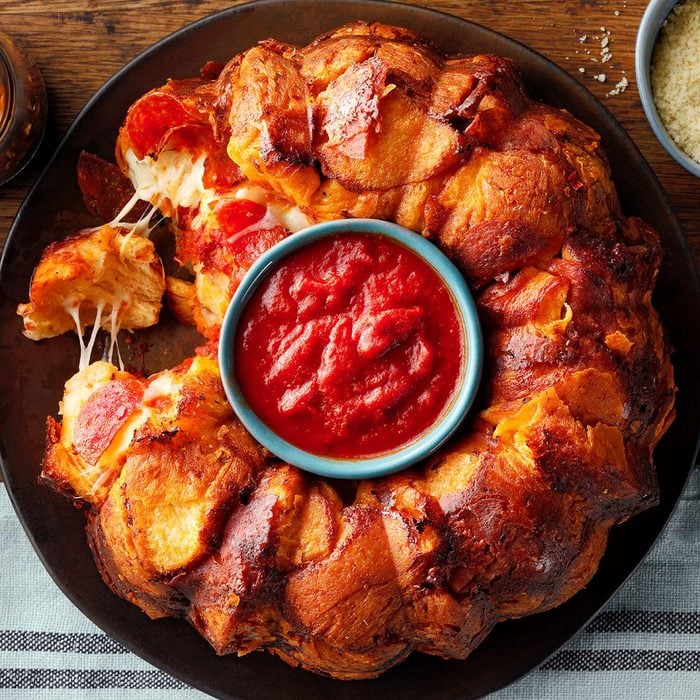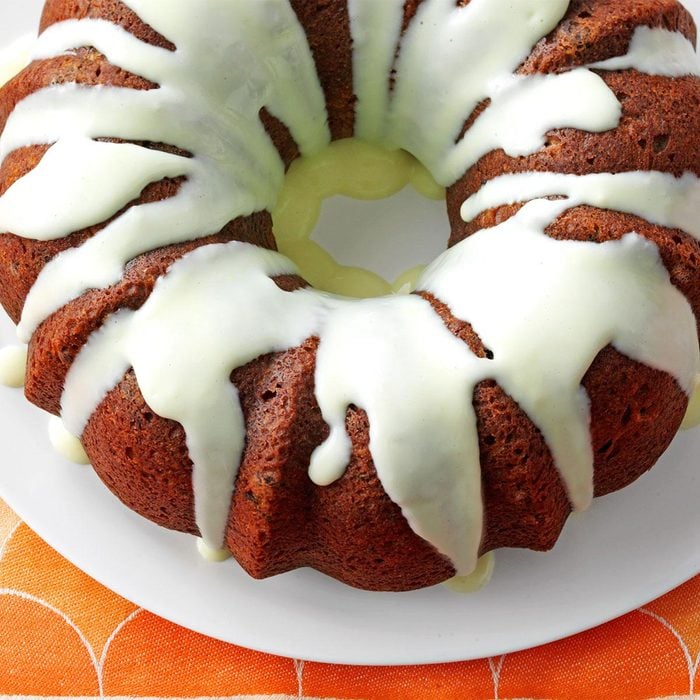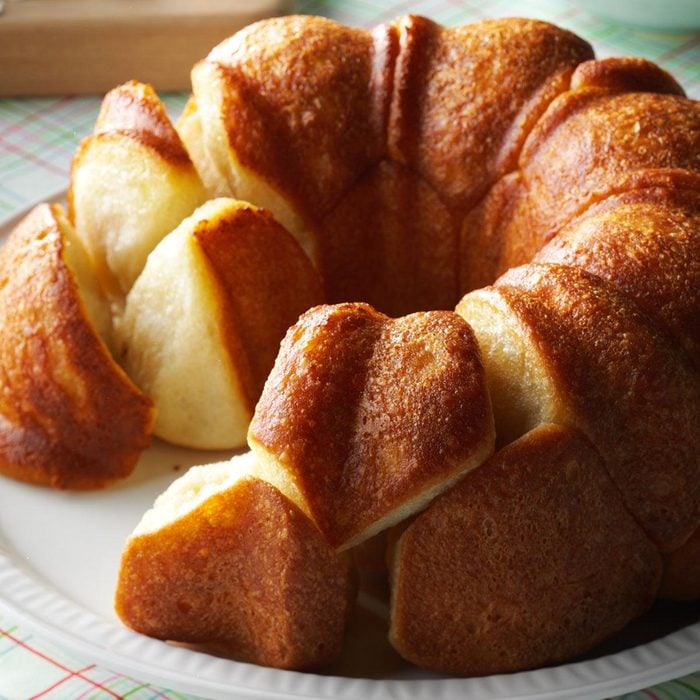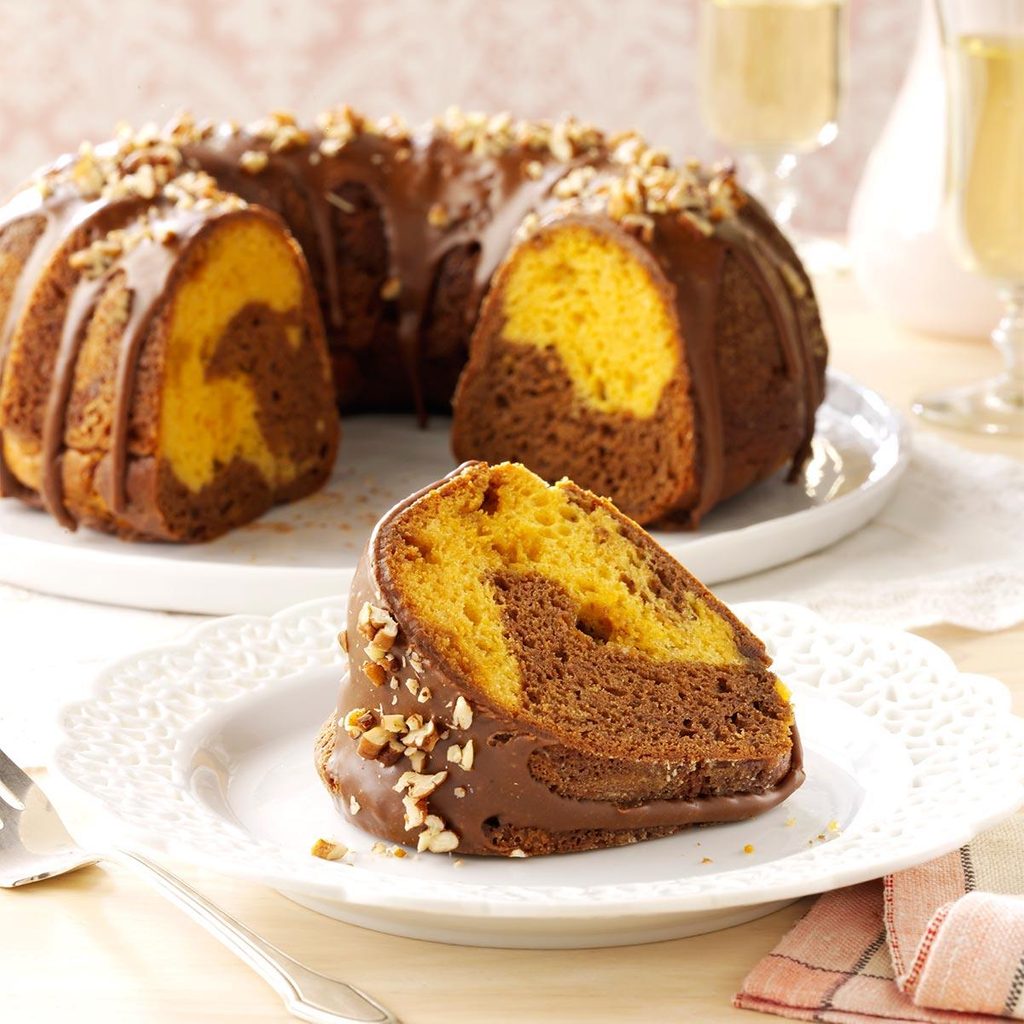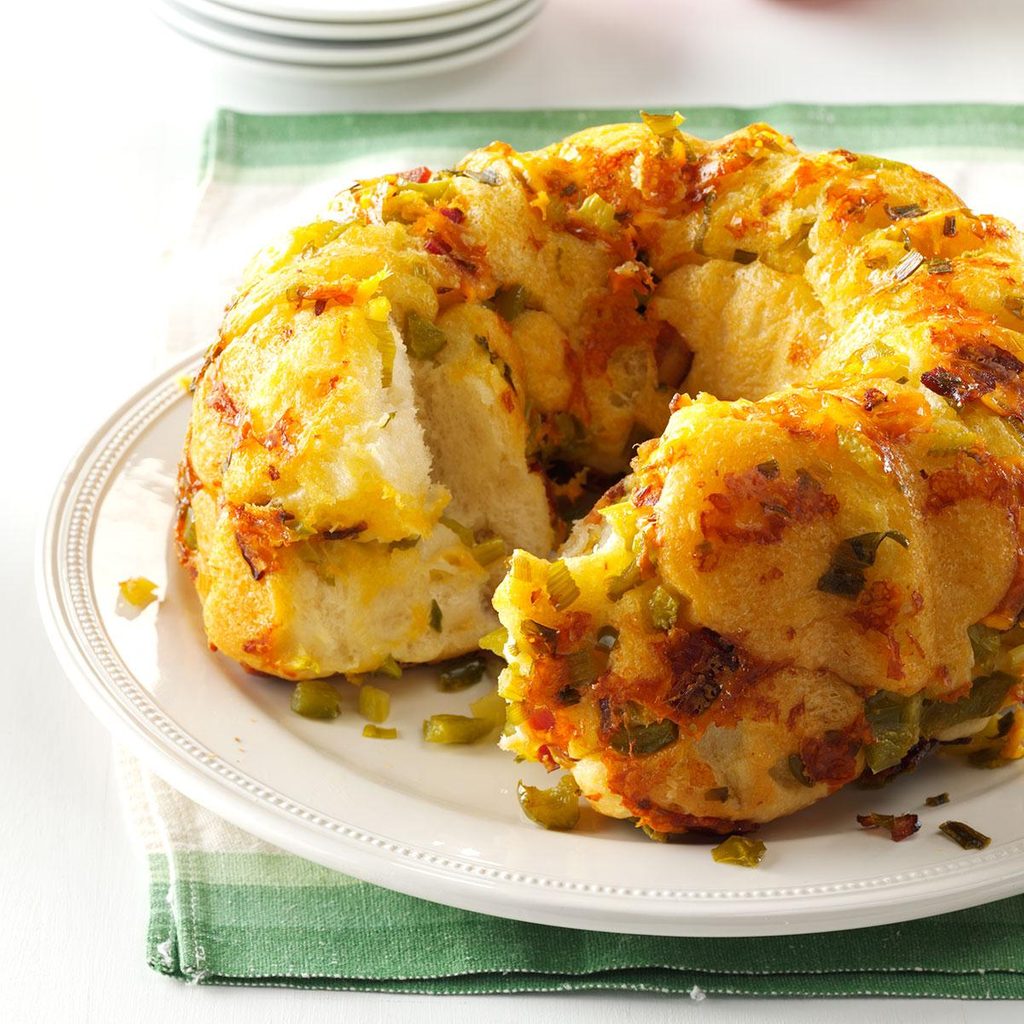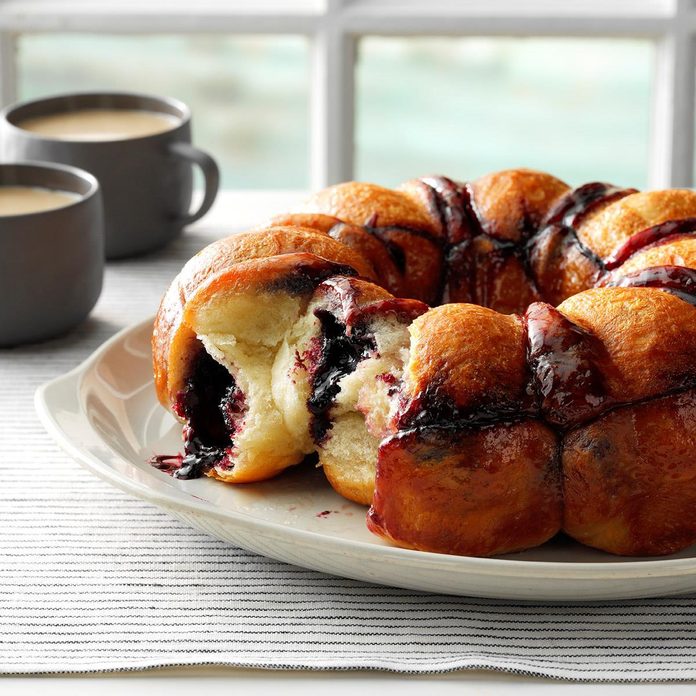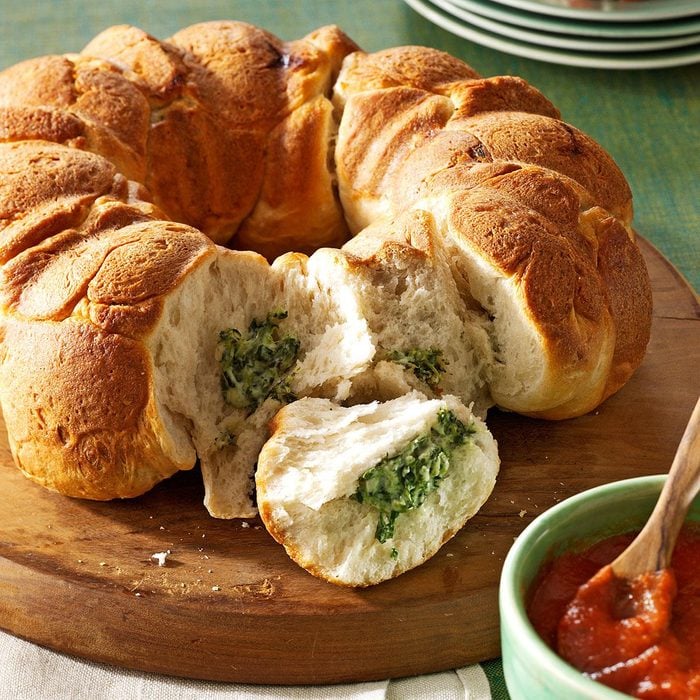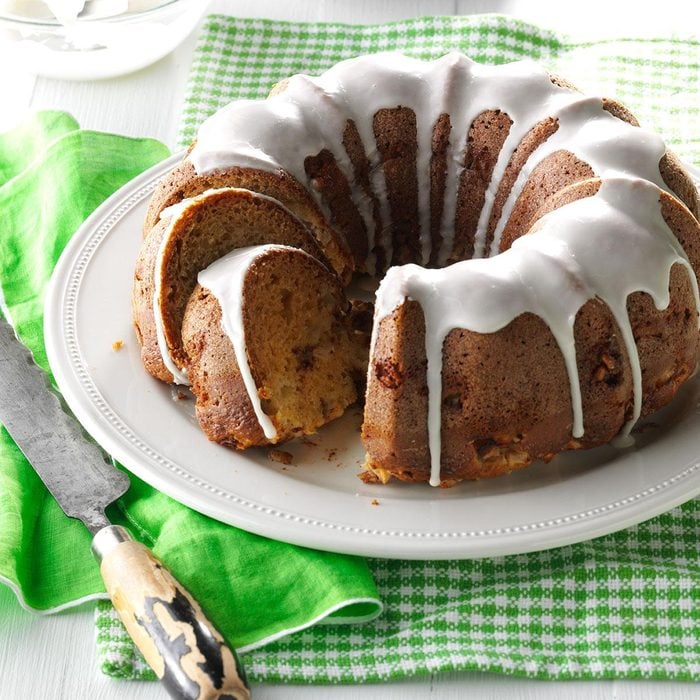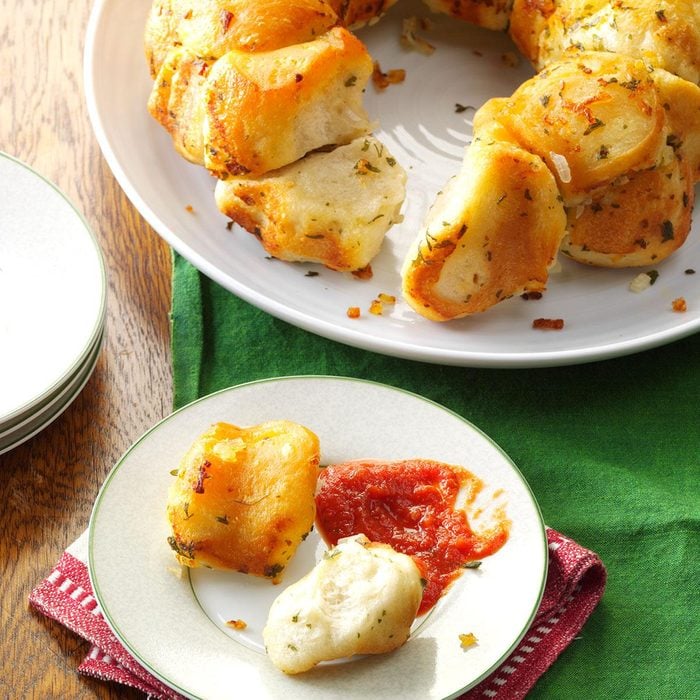The Bundt pan is easily the prettiest pan in the kitchen, with its deep fluted edges that create a beautiful mold. But baking in a Bundt pan can seem daunting, whether you’re making a simple chocolate cake or stunning spice cake. Our Test Kitchen breaks down how to make a Bundt cake with step-by-step instructions and plenty of helpful tips that will work no matter what cake you’re baking. Follow along with our fan-favorite buttermilk pound cake recipe that serves as a perfect example for most Bundt cake recipes.
What Is a Bundt Cake?
A Bundt cake is any cake that you bake in a Bundt pan—simple as that! We’ve got plenty of Bundt cake recipes that were specifically created to be baked in one of your favorite Bundt pans.
But if the recipe you want to make wasn’t specifically written with a Bundt pan in mind, don’t fret—know that you can bake a regular cake in a Bundt pan too, depending on the recipe. Pound cakes, coffee cakes, and sheet and layer cakes with denser batters all work in Bundt pans. However, sponge cakes, chiffon cakes, angel food cakes and other whipped, egg white-based batters won’t hold up.
How to Bake a Bundt Cake
Tools You’ll Need
In addition to your favorite Bundt pan, there are a few tools that will make baking the prettiest Bundt, well, a piece of cake.
- Bundt pan: Pick a Bundt pan that’s aluminum, not glass, silicone or stoneware. Here’s more about how to choose the perfect Bundt pan.
- Cooling rack: When you’re removing the cake from the Bundt pan, flip it onto a cooling rack. Once it cools, you’re ready to frost or glaze.
- Cake turntable: Spin the cake on a turntable as you frost (or glaze) so the frosting goes on evenly.
Directions
Step 1: Prepare the pan
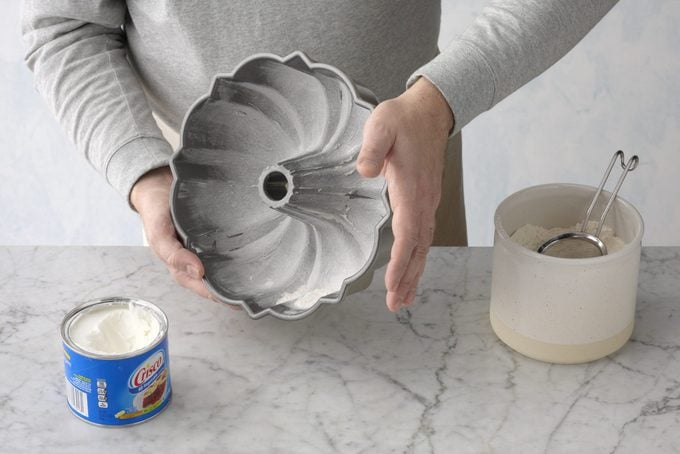 TMB Studio
TMB Studio
The trickiest part of baking any Bundt cake comes not in the baking itself, but in the prep work, since Bundt cakes rely on a perfect release to show off their pattern. If you don’t prep your pan well, you risk having half the cake stick.
Grease your pan with shortening and flour before adding batter. Check out our step-by-step guide to how to grease a Bundt pan for more tips.
Did You Know? The space in the center of a Bundt pan isn’t just for decoration. The hole allows more surface area of the cake to be in contact with the oven’s heat. This means that very sugary or buttery cakes—like fruitcake or pound cake—can fully cook in the center without getting too brown on the outside.
Step 2: Cream sugar and softened butter
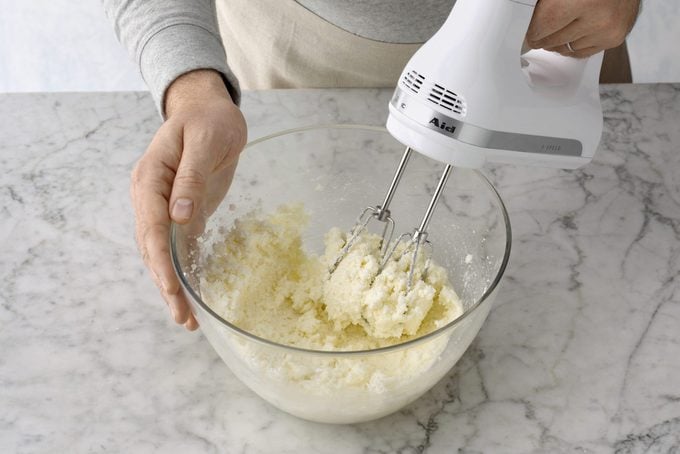 TMB Studio
TMB Studio
Using our buttermilk pound cake recipe, the next step after greasing the Bundt pan is to cream softened butter and sugar. Creaming simply means mixing (or rather, beating) these two ingredients together really well. To get started, grab your beaters and a large bowl. The end result should be evenly light and fluffy throughout, which normally takes about 5 to 7 minutes of beating. Here are more tips on how to cream butter and sugar.
Test Kitchen Tip: If you’ve forgotten to soften your butter, scrape a cold stick from the fridge through a box grater. This will shred the butter into tiny pieces that soften much faster.
Step 3: Add the eggs
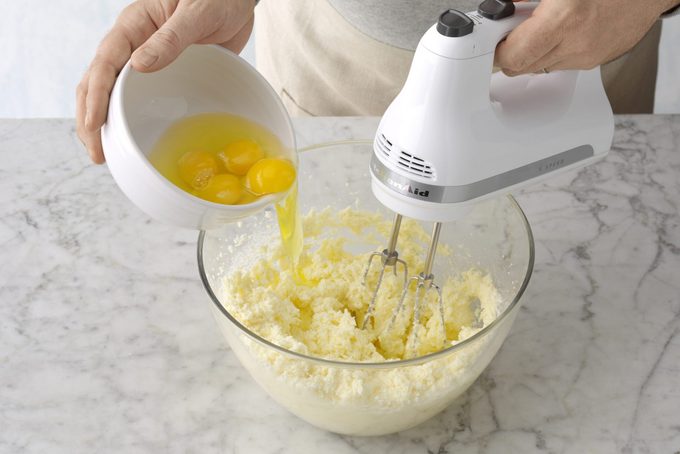 TMB Studio
TMB Studio
If your recipe calls for eggs, crack them into a bowl. Pour them one at a time into your buttery creamed mixture. Beat the batter after each addition.
Step 4: Add remaining ingredients, alternating between wet and dry
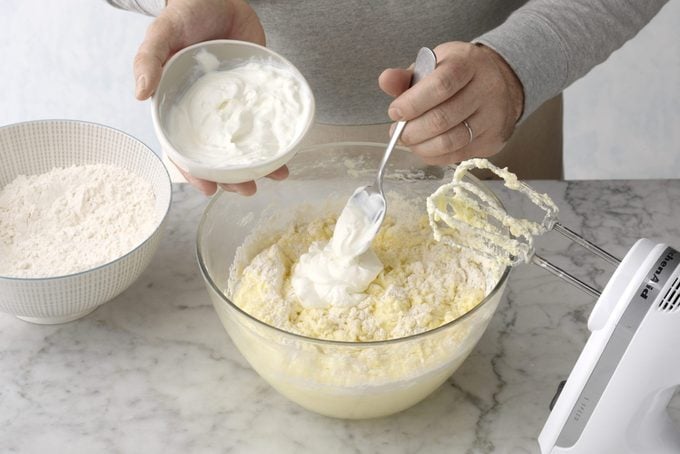 TMB Studio
TMB Studio
After combining the butter, sugar and eggs, you’ll likely still have ingredients like flour, baking soda, extracts, buttermilk, sour cream or oil to add to the Bundt cake batter. Alternate between adding the wet and dry ingredients, beating between each.
The usual way to alternate leftover wet and dry ingredients is to add 1/3 of the dry ingredients to the bowl, then 1/2 of the wet, 1/3 of the dry, the other half of the wet, and finally the last of the dry. This ensures that liquid and dry ingredients are incorporated smoothly. Mix until the dough is blended and smooth, but don’t overmix as it can make your Bundt cake tough.
Test Kitchen Tip: Want to add berries or nuts? Now’s the time. Give them a quick dusting of flour to prevent them from sinking to the bottom of your pan. Then gently fold them into the batter. Don’t beat them in (again, overmixing can make the cake tough).
Step 5: Bake the Bundt cake
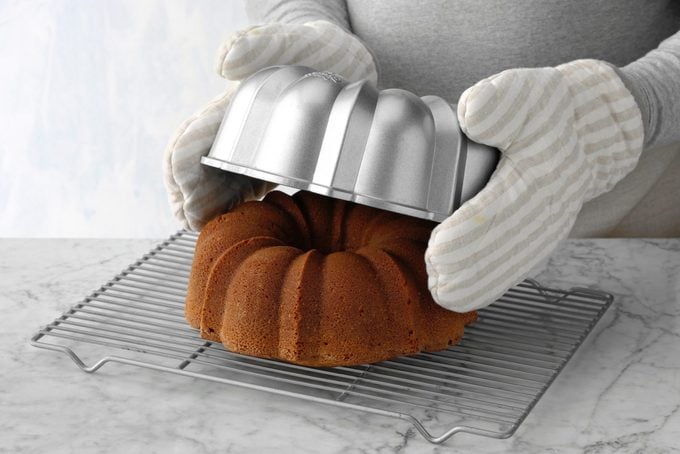 TMB Studio
TMB Studio
Pour the batter in the pan evenly and put it in the oven. Most Bundt cakes bake for anywhere from 45 minutes all the way up to 1-1/2 hours. Bundts are often high in sugar, so they’d over-brown if baked at a typical oven temperature of 350°F. Some Bundts bake as low as 300°.
No matter the recipe, you’ll know your Bundt is done when a toothpick inserted in the center comes out clean.
Finishing the Cake
How to tell if a Bundt cake is done
To test the doneness of the cake, do the toothpick test by sticking in a toothpick. If it’s got any batter or stickiness on it, it needs more time in the oven. Start with an additional 5 minutes and test again. When the toothpick comes out clean, it’s done.
How to remove a cake from a Bundt pan
Take the cake out of the oven and let it cool in its pan for 15 minutes. Then remove to a wire rack to cool completely. To get the cake out of the pan, we like to put a wire rack over the opening. Hold one hand flat on the bottom of cake pan, and put the other hand over the cooling rack. Moving quickly and smoothly, flip your hands so the cake pan is on top. The cake should slide out on its own. If it doesn’t, let it sit for another few minutes and then try again.
Test Kitchen Tip: Follow your recipe’s cooling instructions, and be patient! The recommended cooling time allows air to circulate around the cake so moisture doesn’t build up and make the cake soggy. Here are more common cake mistakes to avoid.
How to frost a Bundt cake
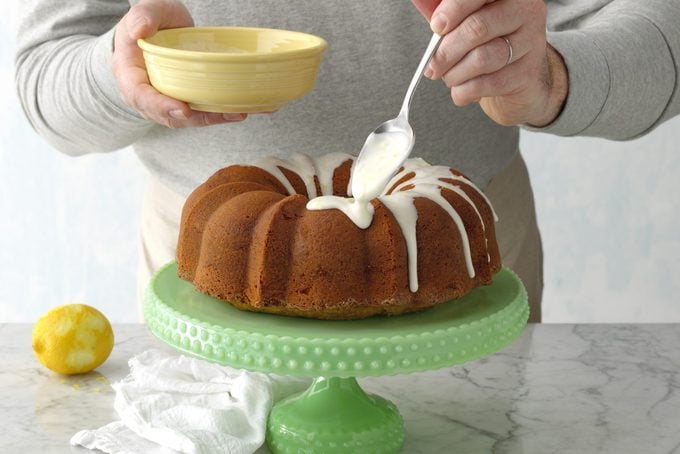 TMB Studio
TMB Studio
Frosting a Bundt cake is particularly easy because you can let the cake’s shape speak for itself. Drizzle on icing or ganache, sprinkle with confectioners’ sugar, or pipe cream cheese frosting along the ridges. A combination of berries and cream is a good choice, too.
Tips for Making a Bundt Cake
Taste of Home Prep Kitchen Manager Catherine Ward shares some Bundt cake tips for even more guidance.
How should you store Bundt cakes?
Like most cakes, you can store Bundt cakes at room temperature in an airtight container. Catherine recommends this cake container—it has a handle that makes it easy to transport.
Can you make Bundt cakes ahead of time?
Thanks to the greater ratio of rich ingredients like eggs, butter and sour cream, heavier cakes such as a pound cake or coffee cake can be made up to 3 days ahead of time. Lighter cakes baked in a Bundt pan, like a cake from a box mix, shouldn’t be made more than a a day ahead of time so it will still be moist when you serve it.
If you want to plan even further ahead, you can make, bake and freeze an unfrosted Bundt cake for up to a month. Place a completely cooled Bundt cake on a baking tray lined with waxed paper or parchment and freeze for 8 hours. Wrap it with plastic wrap and then foil, and freeze for up to a month. When you’re ready to serve the Bundt cake, pull it out of the freezer and unwrap it at least 4 hours ahead of time, letting it thaw at room temperature. Frost it and you’re ready to go!
Test the Method with These Bundt Cake Recipes
Chocolate Comfort Cake
This moist and delicious chocolate cake is usually the first dessert to go. People even eat the crumbs. It’s always my top choice for holiday dinners. —Ellen Riley, Murfreesboro, Tennessee
Go to Recipe
Heavenly Praline CakeA moist Bundt cake and generous frosting are filled with the fabulous flavor of caramel. The candied pecans are almost a dessert by themselves!—Jennifer Rodriguez, Midland, Texas
Grandma's Carrot CakeMy grandma was very special to me. She had a big country kitchen that was full of wonderful aromas any time we visited. This was one of her prized cake recipes, and it continues to be a favorite from generation to generation. —Denise Strasz, Detroit, Michigan
Decadent Fudge CakeEveryone loves the rich flavor in this decadent cake made with four types of chocolate. —Anna Hogge, Yorktown, Virginia
Swiss-Onion Bread RingMy pull-apart bread recipe is crisp and golden on the outside, rich and buttery on the inside. Thanks to store-bought dough, this cheesy bread is a cinch to make. —Judi Messina, Coeur d'Alene, Idaho
Lemon Pound CakeCitrus trees grow abundantly in California, and I'm always looking for new recipes which use the fruit from the orange and lemon trees in my yard. This lemon pound cake is one of my favorites! My mother passed this recipe down to me. —Richard Killeaney, Spring Valley, California
Cinnamon Monkey BreadIs it possible for four kids to cook together without total chaos in the kitchen? Yes, with the right recipe! This cinnamon roll monkey bread is a favorite with my bunch. They get to "play" as they roll pieces of refrigerated biscuit dough into balls. —Lisa Combs, Greenville, Ohio
Citrus-Raspberry Coffee CakeOrange and lemon beautifully complement the raspberry flavor in this dense cake. Add a dusting of confectioners’ sugar for a pretty finishing touch. —Pat Harlow, Cataldo, Idaho
Bacon Pull-Apart BreadI made this tender and tasty bread for my husband, and he just loved it! When I'm out of bacon, I substitute bacon bits. —Terri Christensen, Montague, Michigan
Chocolate Almond CakeFluffy white homemade frosting tops this rich chocolate almond cake. Sliced toasted almonds on top add a little crunch. —Sherri Gentry, Dallas, Oregon
Buttermilk Pound CakeNow that I've retired from teaching, I have more time to bake. This buttermilk pound cake is the one I make most often. It is a truly southern recipe, and one I think can't be topped—once people taste it, they won't go back to their other recipes with buttermilk. —Gracie Hanchey, De Ridder, Louisiana
Surprise Monkey BreadWhen my neighbor hosts brunch, she always asks that I make this monkey bread recipe. I also make a savory version with garlic and cheese for dinner. —Lois Rutherford, Elkton, Florida
Butter Pound CakeWhether garnished with fresh berries and sprigs of rosemary or just served plain, this rich Bundt cake is fabulous. It bakes to a beautiful golden brown and it's definitely a keeper! —Edgar Wright, Silver Spring, Maryland
Peppermint Bundt CakeWith its pretty pink layer and fabulous mint flavor, this Peppermint Bundt Cake is a great holiday dessert. Because I work full-time, I like the convenience of starting with a cake mix. —Lisa M. Varner, El Paso, Texas
Chimichurri Monkey BreadThe herby goodness of my favorite sauce shines in this nostalgic bread recipe that comes together quickly thanks to refrigerated biscuits. Serve warm as an appetizer with marinara for dipping, or as a side to an Italian entree. —Eden Dranger, Los Angeles
Almond Apricot Coffee CakeThe nutty aroma and delicate fruit flavor make this cake special enough to serve to company. Strawberry or raspberry preserves can be used as a tasty variation. —Sharon Mensing, Greenfield, Iowa
Chocolate Monkey BreadWe enjoy this chocolate monkey bread Bundt as we open gifts on Christmas, but it's impossible to resist at any time of year. —Heather Deterding, Odenton, Maryland
Ginger-Walnut Tube CakeMy husband, Ken, loves this Bundt cake with its bits of crystallized ginger. Feel free to drizzle it with a lemony glaze. —Nancy Zimmerman, Cape May Court House, New Jersey
Cinnamon Apple Cider Monkey BreadI use the cold-weather staple apple cider—plus apples and more cinnamon—to turn plain cinnamon rolls into monkey bread. My boys love the sticky sweetness. —Kelly Walsh, Aviston, Illinois
Ginger-Glazed Lemon BundtTangy ginger, tart lemon and puckery cranberries make this melt-in-your-mouth cake as crisp—and gorgeous—as autumn. —Taste of Home Test Kitchen
William Tell’s Never-Miss Apple CakeI bake my family-favorite Bundt cake to usher in fall every year. It looks so luscious that eating one piece is nearly impossible. —Jamie Jones, Madison, Georgia
Caramel-Pecan Monkey BreadThe kids will get a kick out of pulling off gooey pieces of this delectable monkey bread. It's hard to resist a caramel-coated treat. —Taste of Home Test Kitchen
Pear Bundt CakeNext time you make cake from a mix, try my easy and delicious recipe. The pears and syrup add sweet flavor and prevent the cake from drying out. And since there's no oil added to the batter, this tender fall-perfect cake is surprisingly low in fat. —Veronica Ross, Columbia Heights, Minnesota
Patriotic Gelatin SaladAlmost as spectacular as the fireworks, this lovely salad makes quite a "bang" at our July Fourth meal. It's exciting to serve, and our guests loved the cool fruity and creamy layers. This salad really added to my patriotic theme. —Sue Gronholz, Beaver Dam, Wisconsin
Surprise Carrot CakeA cousin gave me this carrot cake recipe. It's a wonderful potluck pleaser with its "surprise" cream cheese center. My husband and our two young children love it, too! —Lisa Bowen, Little Britian, Ontario
Pizza Monkey BreadI cannot throw a party without making this recipe. It's fast and easy, and my kids love it. —Courtney Wilson, Fresno, California
Chocolate Zucchini Cake with Custard SauceThe minute I can get my hands on zucchini, I start making this light and luscious cake. For years it was an often-ordered dessert at my sister's deli. —Peggy Linton, Cobourg, Ontario
Buttery Bubble BreadHomemade bread can be time-consuming, difficult and tricky to make. But this fun-to-eat monkey bread, baked in a fluted tube pan, is easy and almost foolproof. If I'm serving it for breakfast, I add some cinnamon and drizzle it with icing. —Pat Stevens, Granbury, Texas
Choco-Scotch Marble CakeThis recipe was given to me many years ago by a friend. Teaming chocolate with butterscotch for a marble cake makes it more flavorful and colorful than the usual chocolate-vanilla combination. This rich family favorite is very moist and keeps well.
-Pam Giammattei, Valatie, New York
Veggie Pull-Apart BreadA bread machine hurries along the dough-making process, but chopped vegetables, bacon and cheese make the buttery wreath unforgettable. —Christi Ross, Guthrie, Texas
Black Raspberry Bubble RingI first made this pretty bread years ago for a 4-H project. It helped me win grand champion for my county and took me to the Ohio State Fair. It takes some time to make, but I pull out this recipe anytime I want a breakfast or dessert that will really impress. —Kila Frank, Reedsville, Ohio
Spinach Dip Pull-ApartsEven picky eaters who don't like to eat spinach will dig into these tasty little bites. — Kelly Williams, Forked River, New Jersey
Breakfast Apple CakeBaked in a pretty tube pan and drizzled with icing, this breakfast cake will be a highlight of your holiday menu. I adapted the recipe from one of my grandmother's. —Shaunda Wenger, Nibley, Utah
Onion-Garlic Bubble BreadI've relied on this bread recipe often over the years. Frozen dough hurries along the golden pull-apart loaf. It's wonderful with Italian dishes, especially spaghetti and lasagna. —Charlene Bzdok, Little Falls, Minnesota
